|
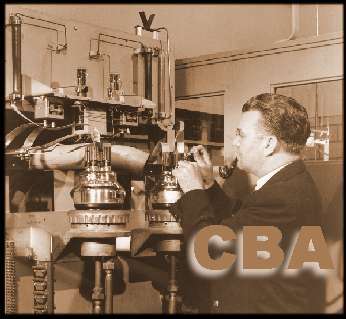 |
The
thumb-nail images in this article may be double clicked and viewed full screen.
|
The Second World War took the CBC into international short-wave
broadcasting. In 1942, the government authorized establishment of the CBC International
Service, to be operated for Canada by the CBC, but completely and separately financed by
Parliamentary grants.
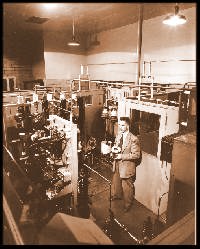 Construction of two 50-kilowatt transmitters began in 1943,
near Sackville, New Brunswick, where the Tantramar marshes have proved to be one of the
best short-wave transmitting locations in the world. Headquarters were set up in Montreal,
and programs fed to Sackville, some 450 air miles away, by landline. After test
transmissions in 1944, the short-wave service was officially opened in February 1945, with
programs directed to Canadian troops overseas and to European listeners. Within a few
months, regular transmissions had been added in Czech, Dutch, Spanish and Portuguese, and
programs were beamed to Latin America and the Caribbean as well as Europe. Construction of two 50-kilowatt transmitters began in 1943,
near Sackville, New Brunswick, where the Tantramar marshes have proved to be one of the
best short-wave transmitting locations in the world. Headquarters were set up in Montreal,
and programs fed to Sackville, some 450 air miles away, by landline. After test
transmissions in 1944, the short-wave service was officially opened in February 1945, with
programs directed to Canadian troops overseas and to European listeners. Within a few
months, regular transmissions had been added in Czech, Dutch, Spanish and Portuguese, and
programs were beamed to Latin America and the Caribbean as well as Europe.
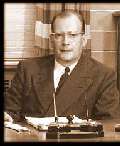 The
Chief Engineer during the early years of CBA was Moe Smith VE1XG who, along with a
talent for Electronics, was an avid photographer and documented many images from the early
years of CBA. Moe's early spark transmitter is on display at the Museum The
Chief Engineer during the early years of CBA was Moe Smith VE1XG who, along with a
talent for Electronics, was an avid photographer and documented many images from the early
years of CBA. Moe's early spark transmitter is on display at the Museum
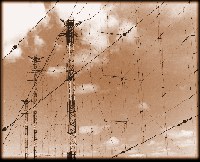 The huge curtain array may be seen for miles across the salt
flats and is capable of operation from 3.9 to 26 MHz. This array is still in service today
with it's hundreds of guy and support cables requiring constant tensioning to maintain the
mechanical integrity. The huge curtain array may be seen for miles across the salt
flats and is capable of operation from 3.9 to 26 MHz. This array is still in service today
with it's hundreds of guy and support cables requiring constant tensioning to maintain the
mechanical integrity.
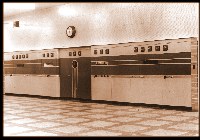 One of the walk in Power Amplifier sections of this RCA 50T transmitter is still on
exhibit at Sackville. The high voltages required to power this monster transmitter was supplied
from the Power Supply Room pictured below. The huge 857B Mercury Vapour tubes and
heavy duty buss bars make this HV room look like an Electrical Sub-Station. One of the walk in Power Amplifier sections of this RCA 50T transmitter is still on
exhibit at Sackville. The high voltages required to power this monster transmitter was supplied
from the Power Supply Room pictured below. The huge 857B Mercury Vapour tubes and
heavy duty buss bars make this HV room look like an Electrical Sub-Station.
Today, from this site Radio Canada International broadcasts at power levels of up to
500,000 watts to all corners of the world.
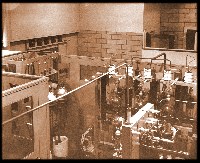 Visitors, incidentally, are always welcome at Sackville. If you plan to be in Atlantic
Canada and would like a tour of the station please write to The Manager, RCI Shortwave
Transmitting Station, P.O. Box 1200, Sackville, New Brunswick, Canada E0A 3C0. You can
also take a virtual visit via the Radio
Canada International web site for more background history on CBA.
Visitors, incidentally, are always welcome at Sackville. If you plan to be in Atlantic
Canada and would like a tour of the station please write to The Manager, RCI Shortwave
Transmitting Station, P.O. Box 1200, Sackville, New Brunswick, Canada E0A 3C0. You can
also take a virtual visit via the Radio
Canada International web site for more background history on CBA.
If you have any early broadcast photos you wish to donate to the Museum
please contact the curator at:
Back to Broadcast Index Page
|
[ Top
] |
Last
updated
February 10, 2004
©
1998 - 2004 Hammond Museum of Radio
|
|
|






